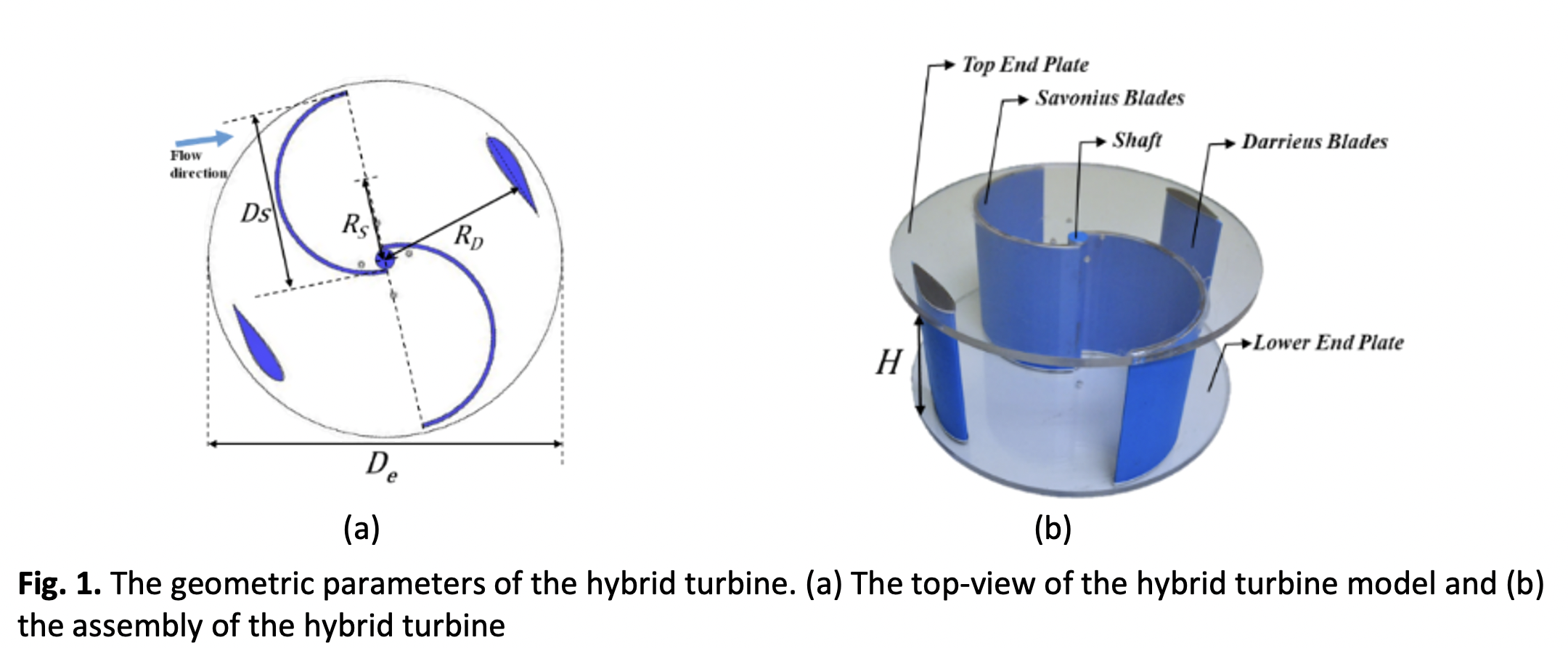Experimental Study of a Hybrid Turbine for Hydrokinetic Applications on Small Rivers in Malaysia
DOI:
https://doi.org/10.37934/araset.28.2.318324Keywords:
Savonius, hybrid turbine, vertical axis turbine, power, hydrokineticAbstract
Energy consumption has become a primary commodity due to technological revolutions in developing countries, such as the expansion of the hydrokinetic turbine as a renewable energy source to mitigate environmental issues. However, conventional vertical axis turbines in hydrokinetic applications particularly for small rivers with low speeds, have limited capabilities such as great power but poor self-start or vice versa. Therefore, the current study aims to address this issue by investigating a hybrid turbine through quantitative and qualitative wind tunnel experiments to improve the performance and self-start capability by integrating Savonius and Darrieus turbines. The findings discovered that the maximum torque coefficient of the hybrid turbine is 37% higher than that of a single conventional Savonius turbine. The integration of the hybrid turbine has resulted in a higher torque coefficient which has enhanced the self-start performance. The hybrid turbine achieved a maximum power output improvement of 30% at a low Reynolds number of 89500, typically representing the small river flow conditions. The presence of a substantial wake captured by the smoke generator at the rear part of the hybrid turbine signifies large drag resulting in power loss and a subsequent decrement in power output. The hybrid turbine has demonstrated its potential to be implemented in hydrokinetic applications in developing countries such as Malaysia for sustainable energy generation.Downloads

Downloads
Published
2022-10-31
How to Cite
Nurul Asyikin Abu Bakar, Muhd Syukri Mohd Shamsuddin, & Noorfazreena M. Kamaruddin. (2022). Experimental Study of a Hybrid Turbine for Hydrokinetic Applications on Small Rivers in Malaysia . Journal of Advanced Research in Applied Sciences and Engineering Technology, 28(2), 318–324. https://doi.org/10.37934/araset.28.2.318324
Issue
Section
Articles




























